By Richard Roud in the September-October 1974 Issue
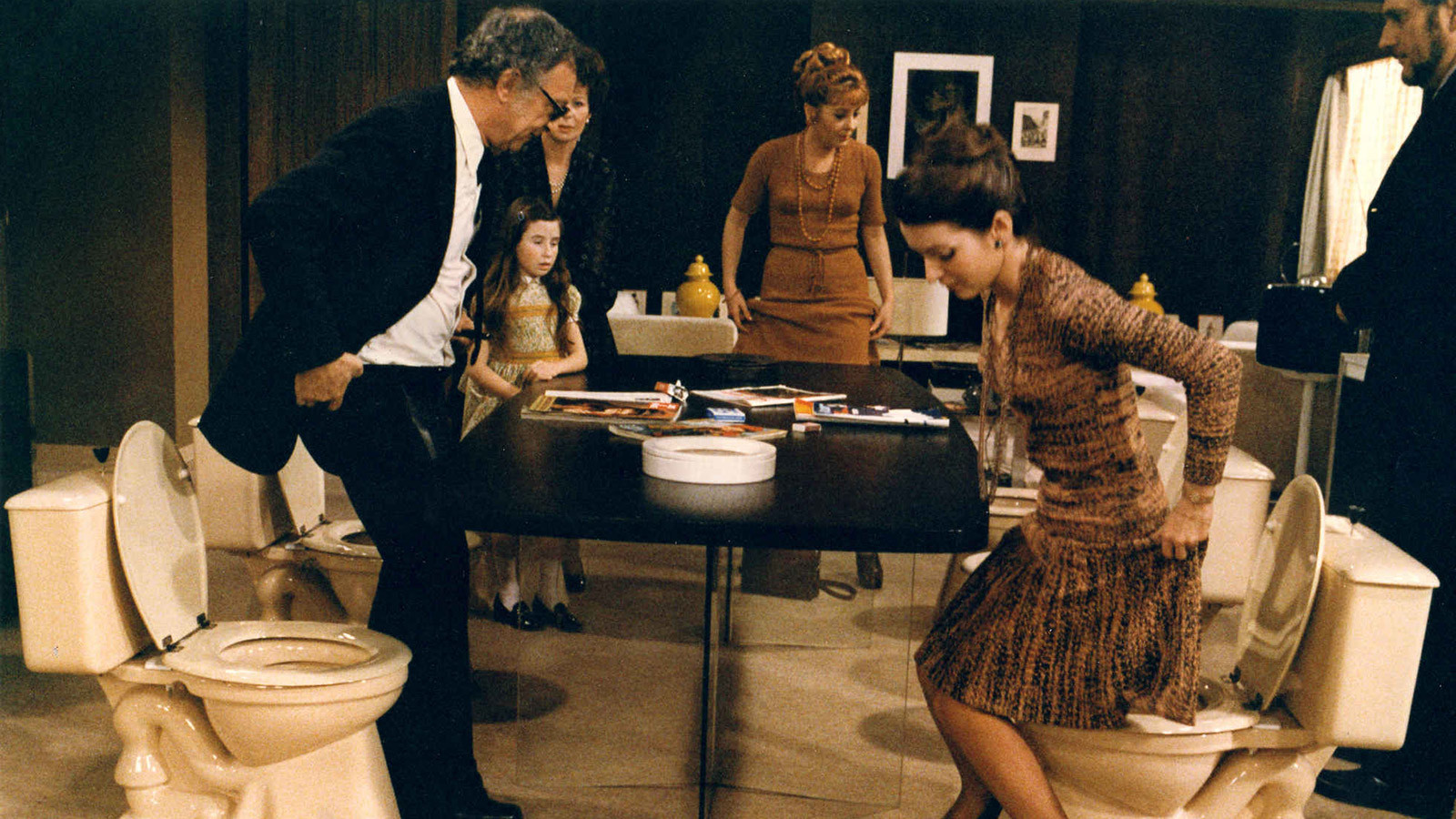
1974 NYFF Preview: The Phantom of Liberty
Luis Buñuel’s recent films are the supreme justification of the politique des auteurs—perhaps the only one. Let it be said in passing that the politique was just that: it was never a theory, only a policy, a hypothesis. One of the axioms was that the great directors became greater as they grew older, that their recent films were better than their earlier ones. It was a generous-minded, well-meaning notion, but in most cases it was simply not true. The Elusive Corporal was not better than The Rules of the Game; Chimes at Midnight was not superior to The Magnificent Ambersons; and even Beyond a Reasonable Doubt, for all its Rivette-like fascination, was inferior to pre-war Lang.
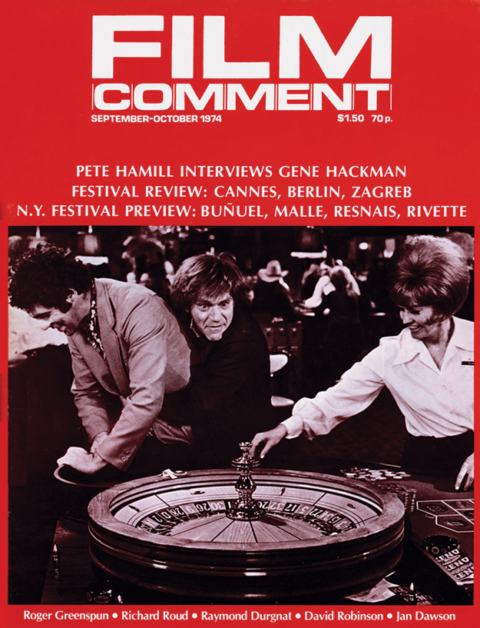
From the September-October 1974 Issue
Also in this issue
Interview: Jacques Rivette
By Jonathan Rosenbaum, Lauren Sedofsky, and Gilbert Adair
But in the past few years—ever since Belle de Jour—Buñuel has constantly been extending himself; the culmination, one thought, had come two years ago with The Discreet Charm of the Bourgeoisie. Now I have just seen The Spectre of Liberty and in it he has gone still further. It has always been true that some artists “peak” early, while others are slow developers; but in Buñuel’s case, there are a number of circumstances which explain his having continued so spectacularly to surpass himself.
One of them has been his return to France, where he has had access to better actors than were available to him either in Spain or Mexico. Another contributing factor has been Serge Silberman; for Buñuel, he has obviously been the ideal producer: supportive, encouraging, even conspiratorial. Most important of all, however, would seem to be his French script collaborator, Jean-Claude Carrière. No one will ever know just how much Carrière has contributed to Buñuel’s later films: one anecdote will give an indication of the special quality he has brought to these late films.
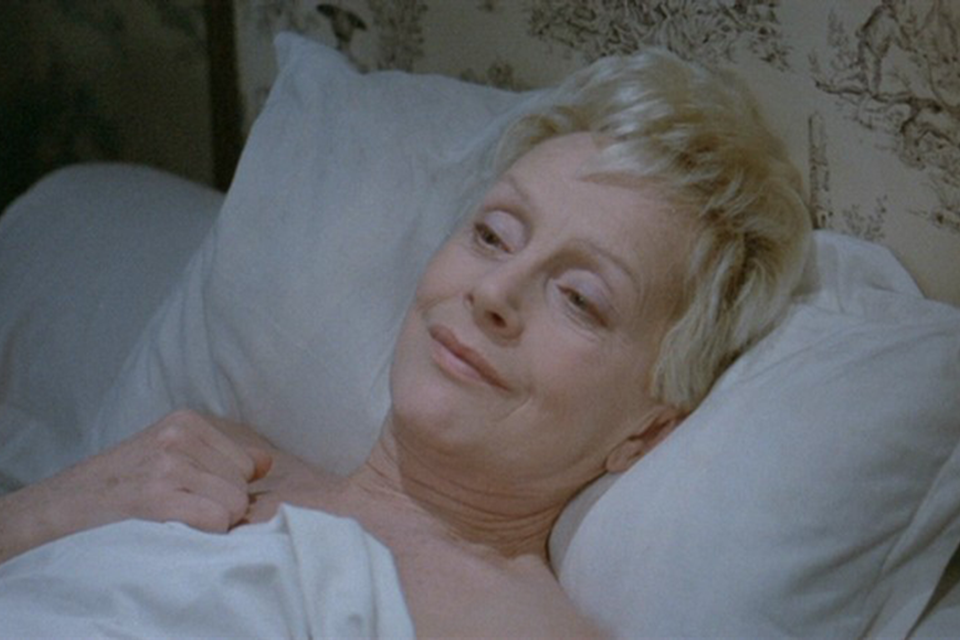
The original title of Buñuel’s last work was to have been The Charm of the Bourgeoisie. Why not call it The Discreet Charm of the Bourgeoisie, suggested Carrière—and they did. A mere detail, but one which leads one to think that Carrière has been responsible for pushing Buñuel just that little bit more, for encouraging him to take that extra step—which is all he has needed to produce this extraordinary late flowering (Buñuel is now seventy-four years old). Whatever the alchemy that operates between the two men, the result has been staggering.
Never more disquietingly so than in the new film. Its narrative technique is unique. Its only predecessors in art have been that extraordinary eighteenth-century Polish novel, The Manuscript Found at Saragossa, and the works of the twentieth-century French writer Raymond Roussel, about whom Olivier de Magny wrote: “His rhetoric of the imagination was thrown like a net into the teeming depths of the irrational, to come up with an enigma that was coherent, yet endlessly prismatic.” This is a film à tiroirs: one story leads to another which leads to another. They are not stories-within-stories, and they are not flashbacks; instead. . . well, listen.
The film begins with Goya’s painting of the Execution of the 3rd of May under the credits, and the first sequence is announced as taking place in Toledo in 1808. The Napoleonic armies have overrun Spain, bringing with them ideas of revolution and freedom. They are fiercely resisted by the Spanish, not only for patriotic reasons, but also because their libertarian ideas are unpopular. The film begins with an execution—and as the Spaniards fall, they cry out “Down with Liberty.” This is a historical incident, the only difference being that they actually shouted the even more frightening line: “Long live chains.”
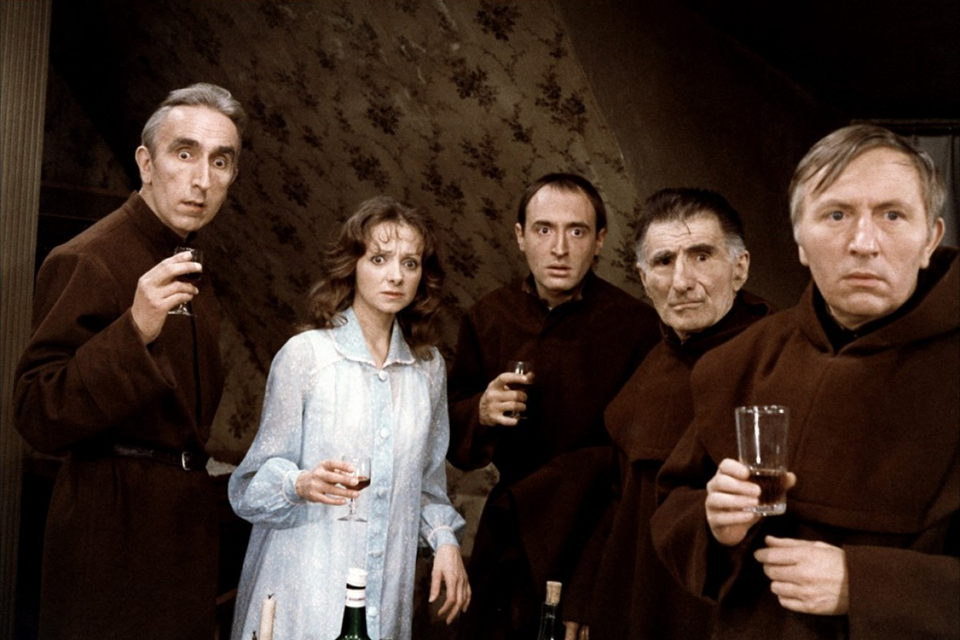
The execution has taken place in a church, and the lieutenant stands musing over a sculpture group of a husband and wife. He admires the figure of the wife, and his hands roam over her marble forms. Suddenly, the arm of the husband’s statue rises, and conks the lieutenant over the head. In revenge, the lieutenant decides to disinter the wife’s body and to spend the night with it. The body is duly exhumed, and lo and behold!, it is in a state of perfect preservation, not only her body itself, but all her par-a-pher-na-li-a.
“Par-a-pher-na-lia? What does that mean?” asks a woman sitting on a park bench in the Paris of 1974—putting down the book she has been reading. Her friend explains, and they part when the less literate nursemaid goes to pick up her charge. But meanwhile, the child has been approached by a suspicious looking man of fifty; he offers to give her some postcards, special postcards, on condition that she doesn’t show them to her parents. She agrees, and is led off home.
Mother (Monica Vitti) and Father (Jean-Claude Brialy) are sitting in the living room fretting like some Antonioni couple as the girl comes in. Ignoring her promise, Veronique shows mother the cards. A look of horror comes over her face, and the nursemaid is immediately sacked. Vitti and Brialy start looking at the cards more closely: “You remember that night in Milan,” she says, “when we were just married.” “Yes,” he replies, “wasn’t it wonderful?”—and tosses the card aside. And we discover that it is (only) a sunset view with a great red sun dominating the picture. They go on being reminded of various sexual experiences, as card follows card—and each one is revealed to us as the Sacré Coeur, the Eiffel Tower, the Arch of Triumph.
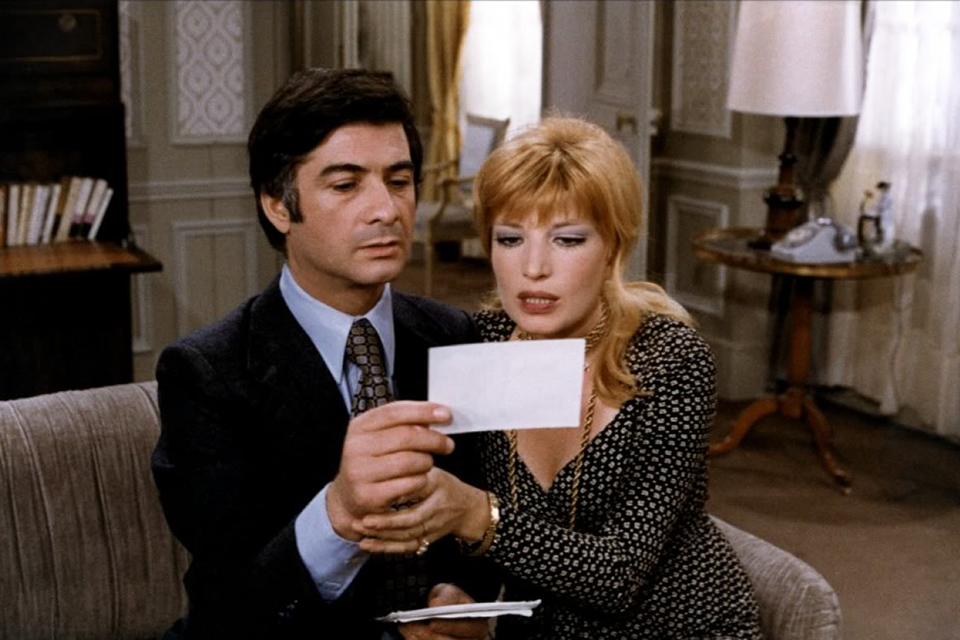
Night falls. Brialy is not looking well, his wife suggests; he really ought to have a check-up. That night, he tosses fitfully. His bedroom is successively invaded by a postman on his bicycle, with a letter for him, a rooster struts proudly across the rug; finally a most disturbing ostrich waddles towards him with a baleful eye. After this terrible night, he does go to see his doctor—who tells him that it is all nonsense. If Brialy wants to waste his money he had better see a psychiatrist. “But I can show you the letter,” cries Brialy. As he is about to do so, the doctor is called out of the room. His nurse (Milena Vukotic) wants a few days off; she has just heard that her father is very ill in the country. Of course, says the doctor, and off she goes.
On the road, she is stopped by an army roadblock—actually a tank—and the soldiers ask if she has seen The Foxes. No, she says; well, keep a lookout for them, they warn. It is quite late when she finally stops at an inn. There are other guests, too: four monks, a Spanish dancer and her guitarist, a peculiar Belgian gentleman from Ostend (Michel Lonsdale), with her sinister assistant, Mlle. Rosenblum. There is also a beautiful young man with, we discover, his old-maid aunt (Hélène Perdrière).
Soon Milena has got the monks playing poker in her room, using scapulars and rosaries as chips; it is revealed that the son and the aunt are in love with each other in spite of the age difference, and that he is trying desperately to get her to go to bed with him. She finally consents to at least show herself naked to him but when he turns round after she has undressed, we see that she has the body of a girl of 21. But she repulses any further advances.
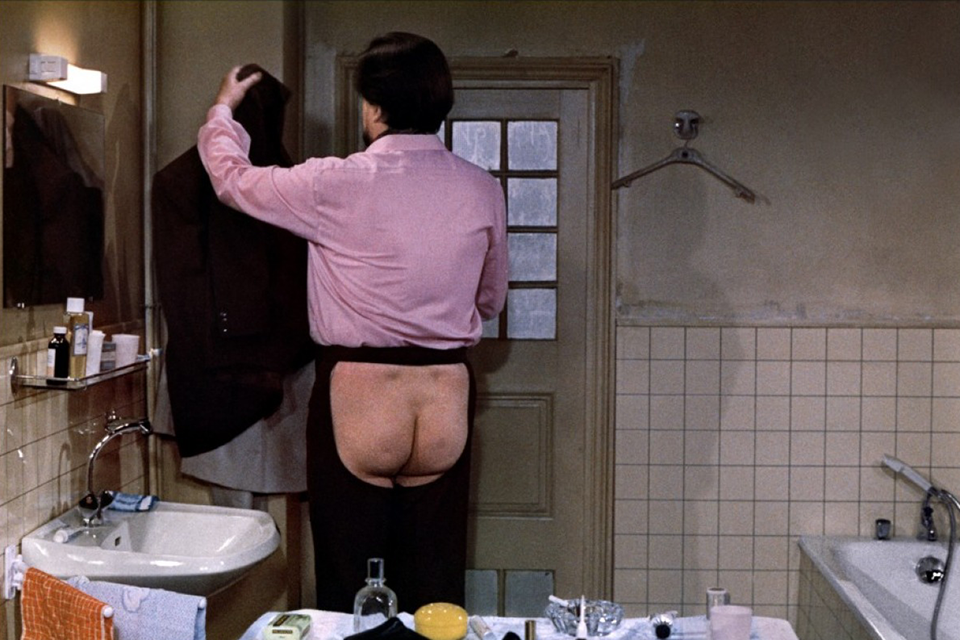
At that point Lonsdale invites them all (they keep meeting in the corridor, for there is only one bathroom on the floor) for a little port in his room. “I like these little impromptus,” he says, as he suddenly appears to them encased in black leather from head to toe, with only his enormous naked buttocks exposed. Then Mlle. Rosenblum swings into action and starts whipping him. “Go on,” he urges, “I’m no good, I deserve it.” The others, horrified, beat a hasty retreat. When the nephew gets back to his room, he finds that his aunt is now ready for anything.
The next morning, Milena is ready to leave when a stranger asks her for a lift to the next town; she deposits him at what turns out to be a school for policemen. There he delivers a lecture on the difference between laws and customs, pointing out the relativity of customs, and suggesting to the bored policemen supplementary readings in Margaret Mead. Then he gives an example from his own experience. Last week, my wife and I were invited to dinner, but when we got to our friends’ house, we found that the dining room chairs had been replaced by toilets. Everyone quite naturally dropped their trousers and lifted their skirts, and sat down for “dinner.” At one point, feeling hungry, he asked to be excused, dressed, and was directed to a little room. There he sat down on a dining room chair, opened a little hatch, and began furtively to eat.
Meanwhile, one of the policeman-students had been called out on road duty, and he stops a man speeding through a small town at a hundred miles an hour. The man explains that he is on his way to Paris to see his doctor. And it’s true: he (Jean Rochefort) is next seen talking to his doctor (Adolfo Celi), who reveals that. . . but I’m going to stop here. It would be a shame to give away the whole film. Part of its fascination is in the way one thing leads, insanely, to another.

The last half is packed with equally bizarre incidents. There’s a child who is supposed to be lost, and who stands there patiently waiting while her description is noted for a police call. There is the animal-loving sniper who guns down dozens from the top of the Montparnasse skyscraper. There are the two Prefects of Police, one real (Michel Piccoli), one false (Julien Bertheau). There is the Italian woman (Adriana Asti) seen in a pub who reminds the false prefect of his dead sister who used to play Brahms in the nude—and who suddenly calls him on the phone (presumably from her well-equipped tomb) to ask him to visit her in the family vault, if he wants to understand “the real mystery of death.” Finally, both prefects become reconciled, and go off on a paramilitary operation against the “resisters” in the Zoo; when “they” are shot down, they too cry out “Down with liberty,” but the final carnage is seen only in the unblinkingly cruel eye of an ostrich. A disturbing ending to a disturbing film.
The style of the work is mise en scène at its most invisible. The very simplicity, the clarity of the technique contrasts with the puzzling complexity of the subject matter: an old surrealist technique. And The Spectre of Liberty is the triumph of surrealist cinema—more so than L’Age d’Or, even—because of its dream-like matter-of-factness, this casual rendering of the nightmarish. Most of the episodes can be seen as examples of the split between appearance and reality. There are the numerous “doubles”: the two prefects; the Italian woman and the dead sister; the ostrich in Brialy’s bedroom and the “real” ostrich at the end; the two doctors, one who assures his patient he has nothing wrong with him, and the other who tells his patient he has terminal cancer of the liver; the Goya painting of the credits which turns up again on the wall of the false Prefect of Police; there are two little girls, the one given the postcards who might have been abducted but who wasn’t, and the one who is said to have been abducted but wasn’t either. Sex makes two appearances, once in the form of sadomasochism, the other with the gerontophile young nephew. But death is the star of the film: Toledo, the sniper, the tomb of the dead sister (her hair coursing through a slit in the coffin), Rochefort’s prognosis, and the final slaughter.
The point of the film, it seems to me after a single viewing, lies in yet another “double”: liberty/slavery. Liberty is something that everyone in theory wants, but of which most are afraid: long live chains, indeed. Surrealism as a movement was above all an exaltation of freedom, but Buñuel seems to be suggesting here that another view exists. Liberty is a specter which continues to haunt mankind, and Buñuel is perhaps saying that this life-force is countered by another force, the fascination with enslavement, with death. In the film, death would indeed seem to be the winner.
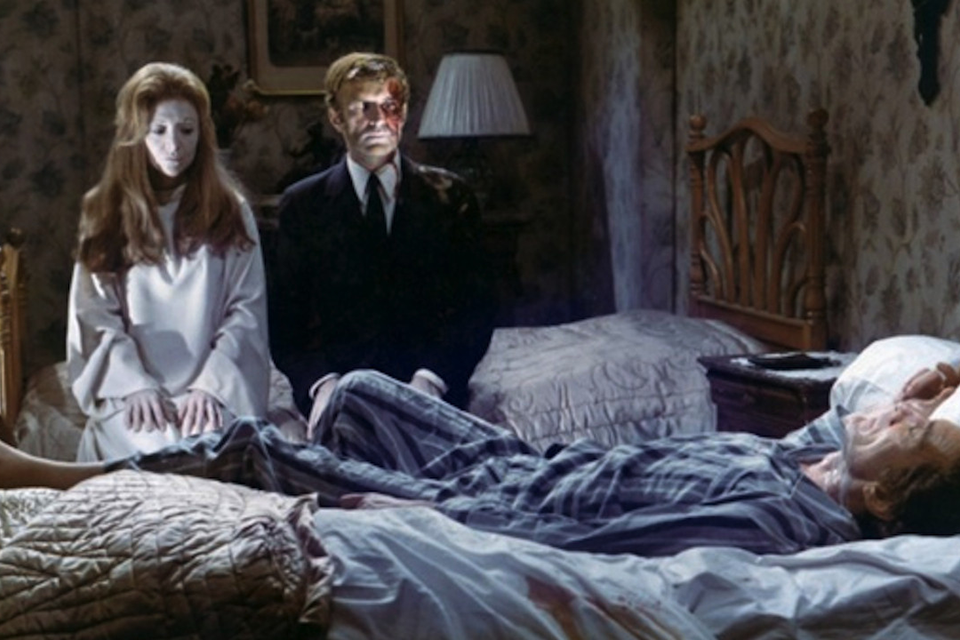
It’s very easy to say this is a very Spanish view, but, for all that, it is. “The dream of reason produces monsters,” said Goya; the dream of freedom does, too. Nonetheless, Buñuel would probably say that this is no reason to abandon the notion of either reason or liberty. Perhaps he is reminding us that these two notions (both typically eighteenth-century ones, be it noted) are more complex than most of us realize. Liberty means choice, and choice is frightening.
The true greatness of the film resides in that it is not immediately understandable. It is an object for meditation. Writing about Raymond Roussel, André Breton said, “I have always maintained that a certain number of poetic works are important essentially for the power they have to appeal to a faculty other than intelligence.” Beneath its lucid exterior, beneath its classical style, The Spectre of Liberty is one of those poetic works: a coherent enigma, inexhaustibly prismatic.







